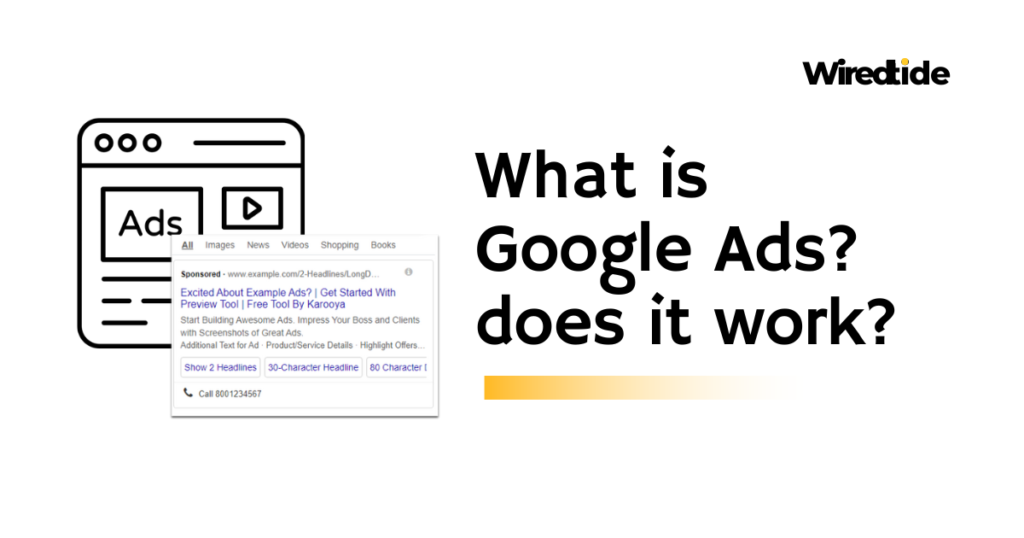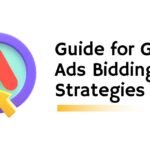Google Ads is one of the most powerful and widely used tools in digital marketing, enabling businesses to reach potential customers through targeted online advertising.
Formerly known as Google AdWords, Google Ads is a paid advertising platform that allows businesses to display ads on Google’s search engine results pages (SERPs), YouTube, and other websites within Google’s Display Network.
What is Google Ads?
Google Ads is an online advertising platform developed by Google where advertisers bid on specific keywords to have their ads appear in Google search results or across Google’s network of partner sites.
The platform operates on a Pay-Per-Click (PPC) model, meaning advertisers only pay when a user clicks on their ad.
How Google Ads Works?
Google Ads primarily operates through an auction system. This means that when someone searches for a relevant keyword, Google holds an auction to determine which ads will appear and in what order.
The ad with the highest ad rank wins the auction and appears at the top of the search results page. Ad rank is influenced by both your bid amount and the effectiveness of your advertisement.
1. Keyword Selection
Advertisers select keywords relevant to their products or services. When a user searches for these keywords on Google, ads related to those keywords may appear.
2. Ad Auction
When a search query matches the keywords an advertiser has bid on, an auction takes place. Google determines which ads to show based on a combination of the bid amount and the ad’s Quality Score.
3. Quality Score
This score is determined by factors like the relevance of the ad to the search query, the expected click-through rate (CTR), and the landing page experience. A higher Quality Score can lead to lower costs per click and better ad placements.
Ad Placement
Ads with higher bids and better Quality Scores are more likely to appear in top positions on the search results page.
Types of Google Ads Campaigns
Google Ads offers several types of campaigns to meet different marketing goals.
1. Search Campaigns
Text ads appear on Google’s search results when users search for specific keywords. This type is ideal for capturing high-intent users who are actively searching for products or services.
2. Display Campaigns
Visual banner ads appear on websites within Google’s Display Network. These are effective for brand awareness and reaching a broader audience.
3. Video Campaigns
Ads appear on YouTube and across Google’s video partner sites. Video ads can be used for brand awareness, product promotion, or driving traffic to a website.
4. Shopping Campaigns
Product listings appear on Google Shopping and in the search results, showcasing product images, prices, and merchant names. This is particularly useful for e-commerce businesses.
5. App Campaigns
Promote mobile apps across Google’s networks, including search, display, and YouTube, to drive app downloads and engagement.
6. Performance Max Campaigns
These are designed to drive performance across all Google Ads inventory from a single campaign, using automation to optimize for the best results.
Benefits of Using Google Ads
With Google Ads, you can create highly targeted campaigns. Specify your desired audience by location, keywords, language, and interests. You can also retarget individuals who have previously engaged with your brand through search or website visits. Here are some of the key advantages:
1. Immediate Visibility
Google Ads can place your business at the top of search results almost instantly, driving immediate traffic to your site.
2. Targeted Advertising
Google Ads offers advanced targeting options, allowing you to reach specific demographics, geographic locations, and even users with particular interests or online behaviors.
3. Measurable Results
Google Ads provides detailed analytics and reporting, enabling you to track the performance of your ads in real-time, including impressions, clicks, conversions, and ROI.
4. Flexible Budgeting
Advertisers can set daily budgets, control their spending, and adjust bids to optimize their campaigns based on performance.
5. High Intent Users
Ads are shown to users actively searching for products or services, increasing the likelihood of conversions.
Key Metrics in Google Ads
Understanding the key metrics in Google Ads is essential for optimizing campaigns.
1. Click-Through Rate (CTR)
The percentage of people who click on your ad after seeing it. A high CTR indicates that your ad is relevant to the users who see it.
2. Cost Per Click (CPC)
The amount you pay for each click on your ad. Lowering CPC while maintaining or increasing CTR is a common optimization goal.
3. Conversion Rate
The percentage of clicks that result in a desired action, such as a purchase or sign-up. A high conversion rate indicates that your landing page is effective.
4. Quality Score
A metric that affects both ad placement and CPC, based on the relevance of your ads, keywords, and landing pages.
5. Impressions
The number of times your ad is shown. This metric is crucial for brand awareness campaigns.
Google Ads Best Practices
To maximize the effectiveness of your Google Ads campaigns, consider these best practices.
1. Keyword Research
Use tools like Google Keyword Planner to identify high-volume, relevant keywords for your ads.
2. Ad Copy Optimization
Write compelling, clear, and concise ad copy that includes a strong call to action (CTA) and relevant keywords.
3. Landing Page Quality
Ensure that your landing pages are relevant to your ads, load quickly, and provide a seamless user experience.
4. A/B Testing
Regularly test different ad variations, including headlines, descriptions, and CTAs, to determine what resonates best with your audience.
5. Bid Management
Monitor and adjust your bids to ensure you’re getting the most value for your budget without overspending.
Conclusion
Google Ads is a critical component of digital marketing, offering businesses the ability to quickly and effectively reach targeted audiences through a variety of ad formats and networks. Whether your goal is to increase sales, generate leads, or build brand awareness, Google Ads provides the tools and flexibility needed to achieve your marketing objectives.




